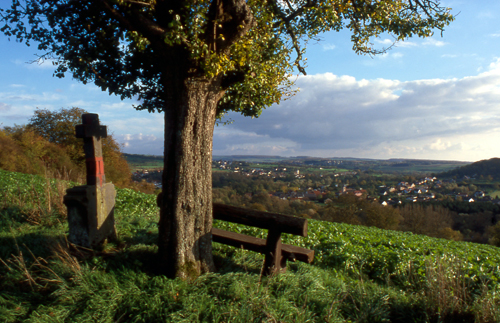Biosphaere Bliesgau/en: Unterschied zwischen den Versionen
Tschug (Diskussion | Beiträge) |
Tschug (Diskussion | Beiträge) K |
||
| (2 dazwischenliegende Versionen desselben Benutzers werden nicht angezeigt) | |||
| Zeile 23: | Zeile 23: | ||
== Downloads == |
== Downloads == |
||
<ul class="box" style="margin-top: 0px;"> |
<ul class="box" style="margin-top: 0px;"> |
||
| − | <li class="download">[//{{SERVERNAME}}/mediawiki/images/3/32/Erlaeuterung_Zonierung_Biosphaere.pdf |
+ | <li class="download">[//{{SERVERNAME}}/mediawiki/images/3/32/Erlaeuterung_Zonierung_Biosphaere.pdf Explanatory document on zoning (last updated 2020)]</li> |
</ul> |
</ul> |
||
| − | == |
+ | == Contacts == |
| + | <b>Ministry for the Environment, Climate, Mobility, Agriculture and Consumer Protection</b><br /> |
||
| − | <b>Ministerium für Umwelt und Verbraucherschutz</b><br /> |
||
| − | + | Dept. D/3 Agriculture and Fishing<br /> |
|
| − | Dr. |
+ | Dr. Tanja Helmes<br /> |
| − | [mailto: |
+ | [mailto:t.helmes@umwelt.saarland.de Email]<br /> |
| − | + | Phone: +49 681 501-4355 |
|
Aktuelle Version vom 2. Januar 2023, 08:32 Uhr
Zoning for Biosphere Bliesgau
(Status of ‘Ordinance on the Bliesgau Biosphere Reserve’ as of 24 June 2020)
Viewer
Go to application: ‘Biosphere Bliesgau’
Description
UNESCO biosphere reserves are model regions for sustainable development. The conservation of biodiversity, the promotion of low-impact tourism and innovative, eco-friendly production methods, as well as the development and marketing of regional products, are all part of the activities that are carried out in biosphere reserves. These reserves offer a unique opportunity for small-scale pilots of new perspectives on sustainable regional development.
Each UNESCO biosphere reserve is subdivided into three zones. The core area is for ‘leaving Nature to its own devices’. The primary aim of the buffer zone is for the maintenance, upkeep and element of ecosystems, whose creation and species diversity stems from their use by humans, and whose continued existence can be assured only by active human management. All areas outside the core and buffer zones form part of the development zone.
The digital map provides you with information about the location of the zones in the UNESCO Biosphere Reserve Bliesgau.
Biosphere Reserve Bliesgau
The UNESCO Biosphere Reserve Bliesgau is Saarland’s model region for sustainable Department. Covering around 36,100 ha, extensive meadow orchards alternate here with picturesque villages, vibrant beech woods, dry grasslands with high species diversity and the unspoilt Blies wetlands. Bliesgau is not only home to Germany’s native orchids but also offers a habitat and rewilding point within Saarland for the endangered little owl. For the survival of other species, such as the marsh fritillary, Bliesgau is a region of European importance.
Yet the biosphere reserve is also itself affected by change: shaped over a great many years by traditional farming and agricultural practice, the region is now also home to high-tech manufacturing companies in the cities of Homburg and St Ingbert.
This special urban-rural relationship is a unique characteristic of the UNESCO Biosphere Reserve Bliesgau. Projects include the regional marketing of local agricultural products as well as the setup and maintenance of regional initiatives, the creation of a partner company network, sustainable tourism, climate action campaigns and education for sustainable development.
Downloads
Contacts
Ministry for the Environment, Climate, Mobility, Agriculture and Consumer Protection
Dept. D/3 Agriculture and Fishing
Dr. Tanja Helmes
Email
Phone: +49 681 501-4355
